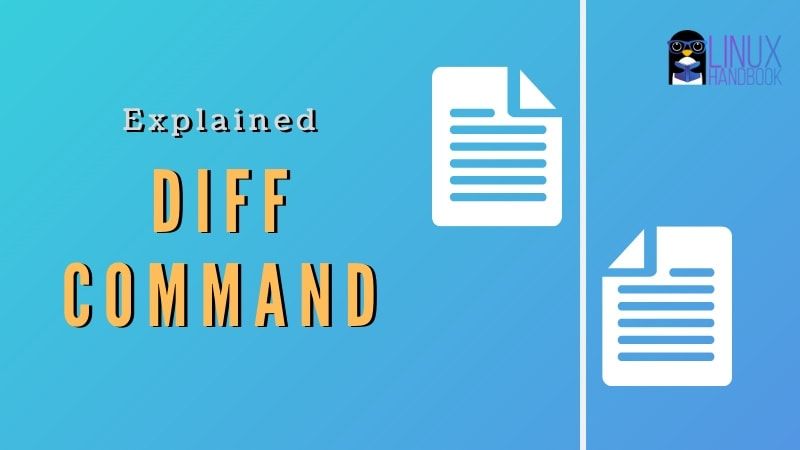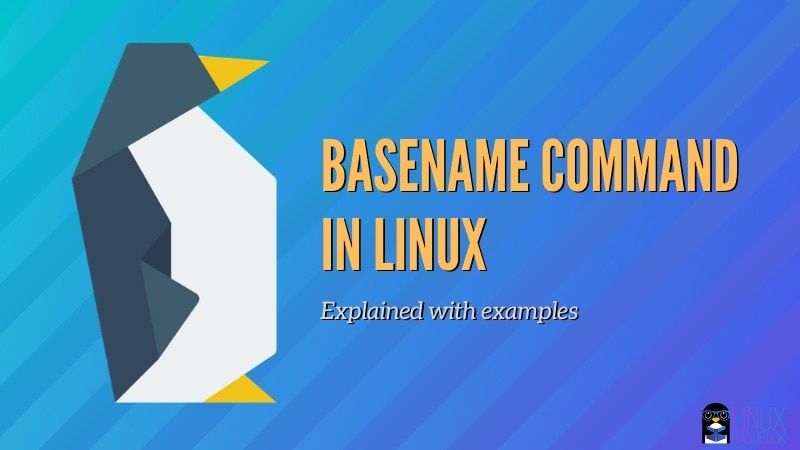Commands
A collection of 125 posts

df Command Examples
The df command is used for checking disk space in Linux. Learn some of the most common usage of the df command in Linux.
· Helder

groupmod Command Examples
Learn how to modify group properties like group name and group ID with the groupmod command in Linux.
· Abhishek Prakash

groupdel Command Examples
Learn how to delete a group in Linux using groupdel command. Also learn what to do with files owned by the deleted groups.
· Abhishek Prakash

groupadd Command Examples
The groupadd command in Linux creates new groups. Learn how to use groupadd command to add new groups in Linux.
· Abhishek Prakash

Export Command in Linux Explained
The export command in Linux is used for creating environment variables. Understand how it works and how you can use export command for practical usage.
· Abhishek Prakash

How to Use Jobs Command in Linux
The jobs command in Linux allows the user to directly interact with processes in the current shell. Here's how to use it.
· Christopher Murray

What is Source Command in Linux and How Does it Work?
The source command is a handy utility that can be used to refresh environment variables among some other things.
· Christopher Murray
![How to Use Linux Screen Command [Essential Guide]](/content/images/size/w1600/2020/06/GNU-screen-1.png)
How to Use Linux Screen Command [Essential Guide]
The screen command in Linux allows you to use multiple virtual terminals that can be saved by name and reopened using keyboard shortcuts. Here's how to use it.
· Christopher Murray

chown Command Examples
The chown command in Linux enables you to change the user and group ownership of a file or directory. Learn to use chown with some practical examples.
· Abhishek Prakash

Schedule Jobs in Linux With 'at' Command
The at command in Linux can be used to schedule jobs that do not run on a regular schedule. Learn how to use the at command.
· Christopher Murray

usermod Command Examples
The usermod command in Linux allows you to modify a user account in various ways. Check out what settings you can modify in this tutorial.
· Abhishek Prakash

userdel Command Examples
If you want to delete an existing user in Ubuntu or any other Linux distribution, you can use the userdel command in the terminal.
· Abhishek Prakash

useradd Command Examples
The useradd command lets a superuser create a new user account on Linux. Here's how to use the useradd command with various options.
· Abhishek Prakash

Using Watch Command in Linux
Watch is a great utility that automatically refreshes data. Some of the more common uses for this command involve monitoring system processes or logs, but it can be used in combination with pipes for more versatility.
· Christopher Murray

stat Command Examples
You can get file permissions, size, mtime, ctime, atime, ownership and several other file attribute information using the stat command in Linux.
· Abhishek Prakash

uname Command Examples
You can get Linux kernel version and some other system information with the uname command in Linux. Here's how to use it.
· Christopher Murray

netcat Command Examples
Here are some practical examples you can follow to learn how the netcat command is used in Linux.
· Christopher Murray

7 Examples of Date Command in Linux
The date command gives you the current date and time of you Linux system. But it can do a lot more than that. Check out these practical examples.
· Ankush Das

locate Command Examples
The locate command allows you to preform a super quick search for files. In this tutorial, you'll learn how locate command works and how to use it.
· Abhishek Prakash

uniq Command Examples
The uniq command in Linux and Unix is used for removing duplicate lines from a file. Learn how to use uniq command with these examples.
· Christopher Murray

Using Diff Command to Compare Two Files in Linux Terminal
The diff command is excellent for comparing two files in Linux terminal. But its output could see super complicated. We uncomplicate the things by explaining the diff command output.
· Christopher Murray

Practical Examples of the Unzip Command in Linux
Got a zip file in the terminal? Learn how to use the unzip command in Linux with these practical examples.
· Abhishek Prakash

Using Linux Basename Command in Bash Scripts
The basename command in Linux prints the final component in a file path. Learn some practical examples of using basename command in bash scripts.
· Abhishek Prakash

5 Practical Examples of the Read Command in Linux
With read command, you can make your bash script interactive by accepting user inputs. Learn to use the read command in Linux with these practical examples.
· Christopher Murray

ps Command Examples
The ps command in Linux is used for getting information about running processes. Here are some useful examples of the complicated and extensive ps command.
· Abhishek Prakash

dig Command Examples
Dig command in Linux is commonly used for retrieving the DNS information of a remote server. Learn how to use the dig command and understand its output.
· Helder

Use fallocate Command to Create Files of Specific Size in Linux
The fallocate is one of the lesser known commands for creating files. What makes fallocate different then the rest is that it allows you to create files of specific sizes.
· Abhishek Prakash

9 Useful Examples of the Split Command in Linux
The split command in Linux allows you to split files into multiple files. There are several ways you can customize parameters for your given application. I’ll show you some examples of the split command that will help you understand its usage.
· Christopher Murray

sort Command Examples
Sort command in Linux is used for sorting the contents of the text files. This tutorial shows you some basic examples of the sort command.
· Christopher Murray

free Command Examples
If you would like to know the detailed information about the memory availability on your Linux system, the free command is a simple utility that makes it easy to find real time results for a variety of use cases.
· Christopher Murray